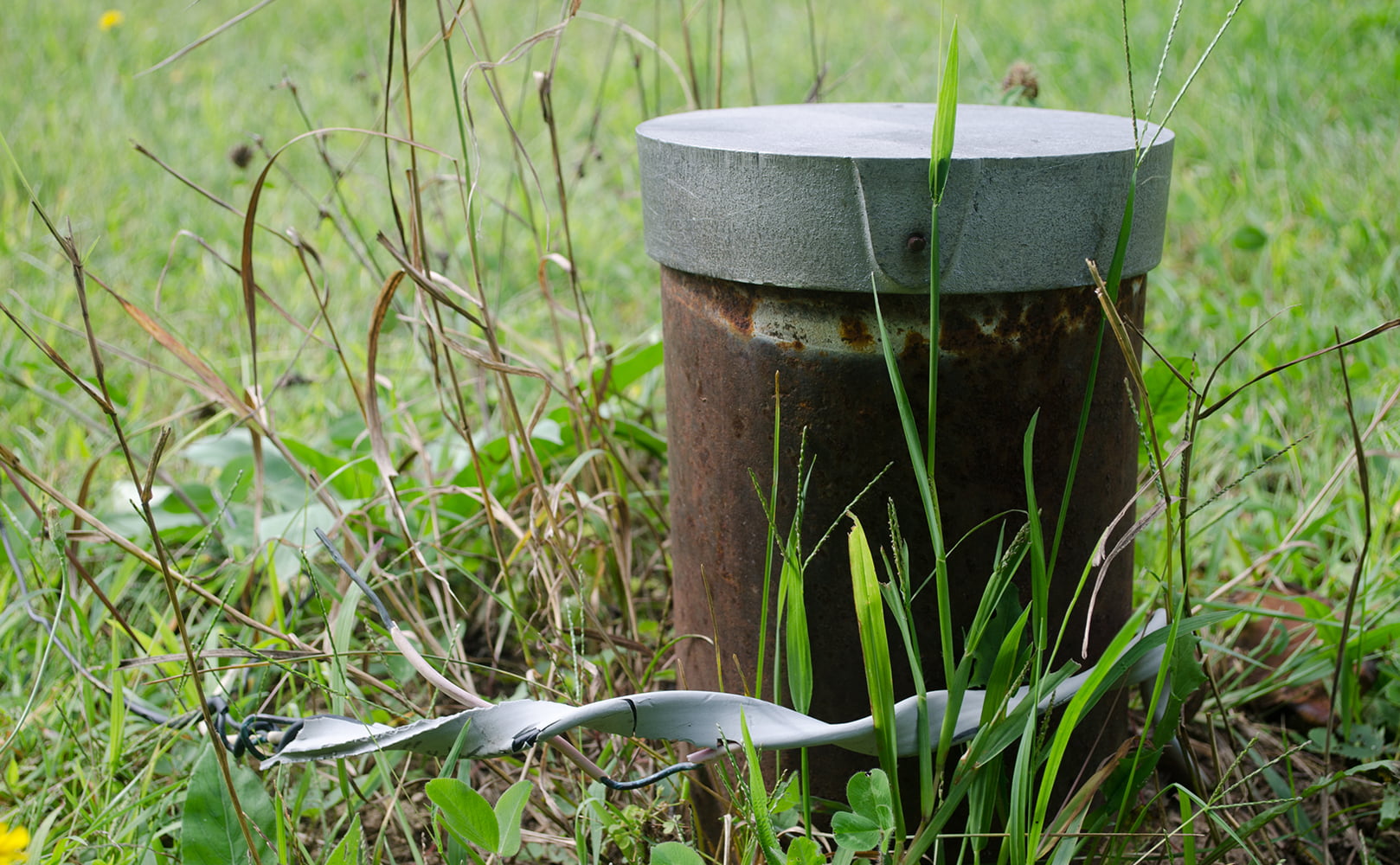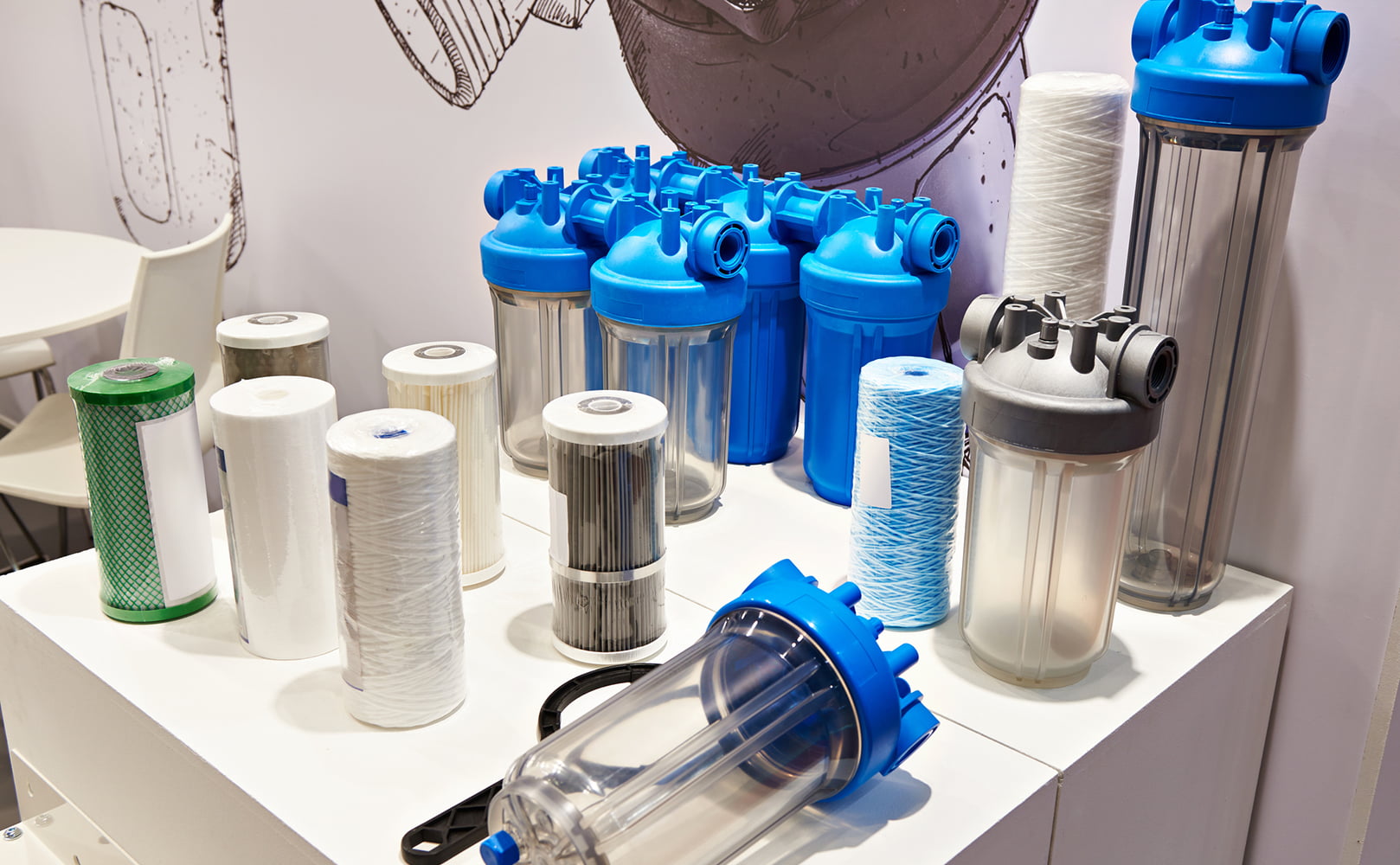How to Filter Well Water for Drinking? Learn All Here!
Written by: Alexandra Uta // Last Updated: Jul 18, 2023
This page may contain affiliate links. If you buy a product or service through such a link we earn a commission at no extra cost to you. Learn more.
Owning a private well spells several advantages over being on a public water system.
One advantage is that you have greater control over your water quality. But with that comes the responsibility of ensuring it is safe to drink.
There are different ways to filter well water and make it safe for drinking.
This guide will go over the factors to consider and various filters you can use for your well water.
Key Takeaways
Depending on your quality of well water, these are the different ways to filter it for drinking:
- Sediment filters – Remove dirt, sand, rust, etc.
- Carbon filters – Remove chlorine and chemical contaminants like pesticides
- Iron/manganese filters
- KDF filters – KDF is effective for removing chlorine and some soluble heavy metals
- RO systems – For broad contaminant removal (e.g., heavy metals, salts, chemicals).
- UV water purifiers – UV light destroys microorganisms
- Water softeners – Removes hard water minerals
What Is Well Water?
Well water is water that has been pumped from the ground.
It can come from an aquifer, which is a layer of underground rock that holds water, or from an artesian well, where the water is under pressure and rises to the surface without being pumped.
Testing: How to Find Out If Your Well Water Is Safe to Drink
Regular water tests are essential in knowing if your well water is safe for drinking. The Environmental Protection Agency (EPA) and the CDC recommend having your well water tested annually for bacteria and nitrates. You should also test for any contaminants specific to your area.
You can have your water tested by a certified laboratory or purchase a do-it-yourself testing kit. Do-it-yourself kits are less expensive but may not be as accurate.
How Often to Test Your Private Well
Yearly water tests are the standard, but because well water can be affected by many external factors, you may need to have it tested more frequently.
Consider immediate testing if:
- There are sudden changes in your water’s taste, odor, or appearance
- There is new construction near or on your well
- Your septic system is having issues
- Floodwaters have entered or come close to entering your well
Types of Well Water Contamination
Well water is prone to contamination for a variety of reasons. Here are a few common types of contaminants:
- Sediment. This is the most common type of contaminant found in well water. It can come from various sources, including rust from pipes, silt and clay in the ground, and organic matter like leaves and twigs.
- Inorganic chemicals. These can also come from different sources, including fertilizers and pesticides. They can dissolve into your water or be present in the form of particles.
- Bacteria and viruses. These are contaminants that can cause serious illness if they are present at high levels. They can enter your well water through sewage systems, septic tanks, agricultural livestock, and wild animals.
Treatment: How to Ensure Your Well Water Is Safe to Drink
There are different methods to ensure your well water is safe to drink. The first method and one you shouldn’t ever skip is getting your well water lab-tested. From there, you can determine what kind of treatment you need in order to achieve drinkable water.
Treatments usually involve a combination of filtration and chemical disinfection.
Well Water Disinfection
Disinfection is a crucial step to getting drinking water if the test results reveal there are bacteria present. You can get rid of bacteria in a few ways.
Boiling
One of the most common and effective ways to disinfect well water is by boiling it for at least one minute. If you’re not going to use it immediately, you can keep it stored in the fridge for at least three days.
Remember that this method will not remove other contaminants such as metals or chemicals.
Shock Chlorination
If test results show your water has high levels of coliform bacteria, you’ll need to perform a process called “shock chlorination”. This is where chlorine bleach is added to the well in large amounts to kill off the bacteria.
Once finished, the system is flushed out by running all the taps in your house for 15-20 minutes.
How to Shock a Well
You can perform the shock chlorination process yourself or hire a professional. If you go the DIY route, follow these steps:
- Turn off any pumps or water treatment devices connected to your well.
- Measure and add the chlorine bleach to your well. The amount you need will depend on the depth and volume of your well.
- Reconnect any pumps or water treatment devices and let them run for at least 30 minutes before turning them off again.
- Let the chlorine sit in your well for 1 to 24 hours before using any water. You can do this by disconnecting any water lines going to your house and opening all the taps inside until you smell chlorine.
- Once the chlorine has sat in your system long enough, flush out your system again by running all the taps in your house for 15-20 minutes.
The Different Well Water Treatment Systems
Using the correct well water filter system is key to having safe drinking water. Remember to review your water test results before shopping for water filters. Below are the filters available.
Sediment Filters
Sediment filters are designed to remove physical contaminants like dirt, sand, and rust from your well water. They come in a variety of sizes and micron ratings. The smaller the micron rating, the more effective the filter will be at removing sediment.
These filters must be replaced regularly, depending on how much sediment is in your water and how often you use the filter.
Carbon Filters
Carbon filters work to remove contaminants like chlorine, pesticides, and herbicides. They use a process called adsorption, in which molecules of the contaminant adhere to the surface of the filter.
Granular activated carbon (GAC) filters are a type of carbon filter. They are made from ground carbon that has been treated to increase its adsorption ability.
Another type of carbon filter is a block carbon filter. It contains activated carbon that has been compressed into a solid block. Block carbon filters have a larger surface area than GAC filters and can therefore remove more contaminants.
Iron/Manganese Filtration Systems
If your water contains high levels of iron and/or manganese, you will need an oxidation filter followed by a micron filtration system. Iron and manganese filters work by first oxidizing the iron and manganese in the water, then capturing it on a filter media.
The most common iron/manganese filter uses potassium permanganate as the oxidizer. These systems are often called “greensand” filters because of the color of the filter media. As water passes through the filter, the greensand oxidizes the iron and manganese in the water.
The oxidized particles are then trapped on the media bed and filtered out of the water. Greensand filters need to be “recharged” periodically with potassium permanganate to maintain their filtering ability.
KDF Filter
A KDF filter is a water filter that uses kinetic degradation fluxion to remove impurities from water. Kinetic degradation fluxion works by attracting and binding contaminants to the filter media. This is effective in removing chemicals, including chlorine, and certain heavy metals – lead.
KDF filters are available in several different sizes and types. The size you need will depend on how much water you want to filter. These filters can be used in both whole-house systems and point-of-use systems.
Reverse Osmosis
Reverse osmosis is a process where water is forced through a semipermeable membrane. This will take out most, if not all, contaminants in the water, including bacteria, fluoride, and lead.
Reverse osmosis systems can be placed under the sink or be whole house systems. Be sure to get one that meets your needs and can handle the amount of water you use daily.
UV Water Purifiers
UV purifiers use ultraviolet light to disinfect water. The process works by pumping water through a chamber where it is exposed to UV light. The UV light then effectively destroys bacteria and viruses in the water.
UV water purifiers do not remove particles from well water, so it is important to have a sediment filter before the UV purifier.
Water Softeners
A water softener’s task is to remove hard minerals, such as magnesium and calcium, from your water. They also help prevent scale buildup in pipes and appliances.
Well water is prone to high hardness levels because of the minerals it picks up from underground. Hard water can damage your plumbing and appliances. It can also make your soap less effective and leave mineral deposits on dishes and clothing.
The Pros and Cons of Drinking Well Water
Owning a private well has its advantages and disadvantages. If you’re interested in building your own well, weigh these pros and cons.
Pros
- You have greater control over the quality of your water
- It can save you money on your water bill
- Your water will likely taste better provided you maintain it
Cons
- You are responsible for ensuring that the well water is safe to drink
- There can be hidden costs, such as the need to test your water or repair your well pump occasionally
- You may need to purify or filter your water to make it safe to drink
If you have any questions about filtering well water for drinking please don’t hesitate to leave a comment below!
Information provided on BOS is for educational purposes only. The products and services we review may not be right for your individual circumstances.
We adhere to strict editorial guidelines. Rest assured, the opinions expressed have not been provided, reviewed, or otherwise endorsed by our partners – they are unbiased, independent, and the author’s alone. Our licensed experts fact-check all content for accuracy. It is accurate as of the date posted and to the best of our knowledge.



